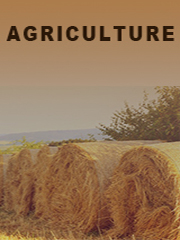TOP CATEGORY: Chemicals & Materials | Life Sciences | Banking & Finance | ICT Media

Download Report PDF Instantly
Report overview
Organic trace minerals are minerals used in small quantities, which are formed by attaching inorganic trace minerals to organic molecules such as amino acids or polysaccharides. The organic molecules used in the formation of organic trace minerals are called chelates. Though only small quantities of organic trace minerals are added to animal feed, they play an important role in maintaining the animal's health. The chelates in these minerals prevent the trace minerals from interacting with other minerals and feed components in the animals' bodies, thereby enhancing the absorption of the trace minerals. The bioavailability of organic trace minerals is higher than that of inorganic trace minerals. As a result, organic trace minerals are increasingly preferred over inorganic trace minerals in the animal feed segment.
This report aims to provide a comprehensive presentation of the global market for Trace Minerals for Animal Feed, with both quantitative and qualitative analysis, to help readers develop business/growth strategies, assess the market competitive situation, analyze their position in the current marketplace, and make informed business decisions regarding Trace Minerals for Animal Feed. This report contains market size and forecasts of Trace Minerals for Animal Feed in global, including the following market information:
Outline of Major Chapters:
Chapter 1: Introduces the definition of Trace Minerals for Animal Feed, market overview.
Chapter 2: Global Trace Minerals for Animal Feed market size in revenue and volume.
Chapter 3: Detailed analysis of Trace Minerals for Animal Feed manufacturers competitive landscape, price, sales and revenue market share, latest development plan, merger, and acquisition information, etc.
Chapter 4: Provides the analysis of various market segments by type, covering the market size and development potential of each market segment, to help readers find the blue ocean market in different market segments.
Chapter 5: Provides the analysis of various market segments by application, covering the market size and development potential of each market segment, to help readers find the blue ocean market in different downstream markets.
Chapter 6: Sales of Trace Minerals for Animal Feed in regional level and country level. It provides a quantitative analysis of the market size and development potential of each region and its main countries and introduces the market development, future development prospects, market space of each country in the world.
Chapter 7: Provides profiles of key players, introducing the basic situation of the main companies in the market in detail, including product sales, revenue, price, gross margin, product introduction, recent development, etc.
Chapter 8: Global Trace Minerals for Animal Feed capacity by region & country.
Chapter 9: Introduces the market dynamics, latest developments of the market, the driving factors and restrictive factors of the market, the challenges and risks faced by manufacturers in the industry, and the analysis of relevant policies in the industry.
Chapter 10: Analysis of industrial chain, including the upstream and downstream of the industry.
Chapter 11: The main points and conclusions of the report.